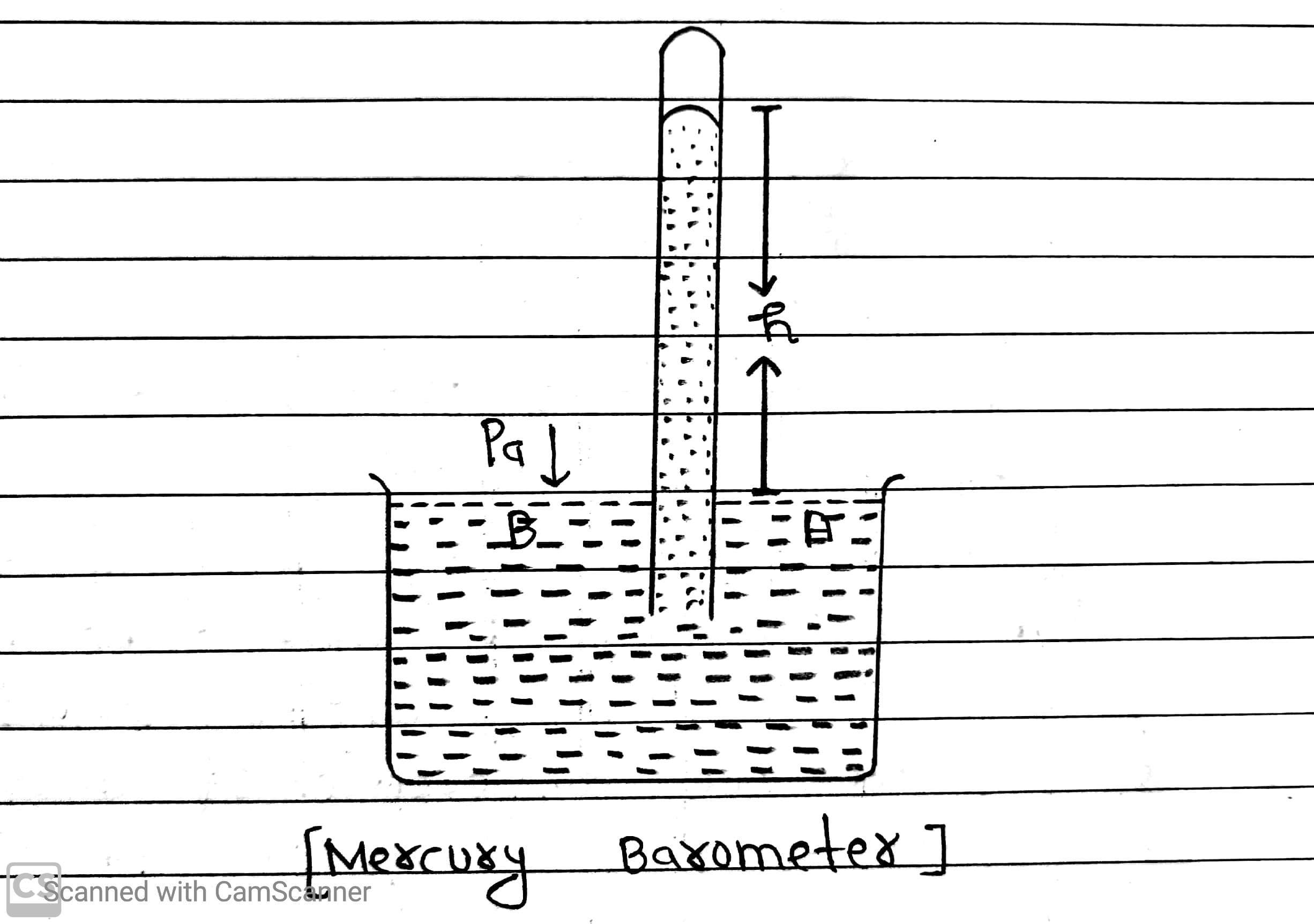The gaseous envelope surrounding the earth is called Earth’s atmosphere. The pressure exerted by the atmosphere is called atmospheric pressure.
The force exerted by air column of air on a unit area of the earth’s surface is equal to the atmospheric pressure. It is denoted by Pₐ.
The value of atmospheric pressure on the surface of the earth at sea level called one atmosphere (1 atm). It is nearly about 1.013×10⁵ N/m².
The earth atmosphere exerts a huge pressure, which can be demonstrated by as methods.
(I) Mercury Barometer
An Italian scientist Evangelista Torricelli (1608-1647), first devised an instrument to measure atmospheric pressure. It is known as barometer.
A long glass tube closed at one and and field with mercury is inserted into a trough of Mercury.
We find that Mercury column in the tube has height of about 76 cm above the Mercury level in the trough.

If the given tube is inclined or raised up or lowered in Mercury trough, the vertical height of the Mercury level in the tube is always found to be constant.
The space above mercury in the tube contains mercury vapours and its pressure can be neglected.
Let us consider point A and B, then
PA = PB = Atmospheric Pressure Pₐ
Let h is the height of Mercury column and row is the density of Mercury.

(II) Open Tube Manometer
Open tube manometer is used to measure pressure difference. It contains of a U-shape tube containing a liquid having low density such as oil to measure the small pressure difference and mercury as the high density liquid to measure the large pressure differences. One end of the tube is open to the atmosphere and other end is joined with a flask, whose pressure we want to know.


